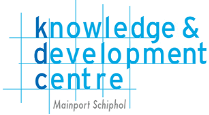Joost Schimmel (BSc) – Complexity factors in multiple- and remote tower operations
Amsterdam Airport Schiphol currently operates with three ATC towers, including one fallback tower. The main ATC Tower Centrum (TWR-C) and Tower West (TWR-W) are used in a dual-tower operation for ATC ground handling and runway control. TWR-W handles the air traffic at runway 36L/18R (Polderbaan). LVNL is conducting a study to integrate the existing two control towers into TWR-C; the motivation behind these considerations is to reduce costs and personnel deployment. Additionally, LVNL is exploring the possibility of remotely managing multiple regional airfields from a single tower center. This includes considering the option of multiple remote towers, where two airports could be managed simultaneously from one controller working position.
Graduated: July 2024










































 Matthijs Ottenhoff (MSc) – Wind and Trajectory Uncertainty in a 4D Trajectory Management Interface
Matthijs Ottenhoff (MSc) – Wind and Trajectory Uncertainty in a 4D Trajectory Management Interface Eline Bakker (MSc) – Design and Evaluation of a Visual Interface for an En-Route Air Traffic Control Merging Task
Eline Bakker (MSc) – Design and Evaluation of a Visual Interface for an En-Route Air Traffic Control Merging Task – Creating more capacity at Amsterdam Airport Schiphol by reducing planning inefficiencies amongst KLM, LVNL and AAS
– Creating more capacity at Amsterdam Airport Schiphol by reducing planning inefficiencies amongst KLM, LVNL and AAS – Evaluation of plan stability deviations in the flow at Schiphol airport
– Evaluation of plan stability deviations in the flow at Schiphol airport – Evaluation of peak hour capacity at Schiphol and similar airports to determine common capacity management practices
– Evaluation of peak hour capacity at Schiphol and similar airports to determine common capacity management practices – Schiphol noise analysis for fixed arrival routings
– Schiphol noise analysis for fixed arrival routings 
 – D-1 process impact evaluation
– D-1 process impact evaluation Casper Moll (BSc) – Capacity analysis of airport slot planning and air traffic demand
Casper Moll (BSc) – Capacity analysis of airport slot planning and air traffic demand Marc Riebeek (BSc) – Comparison of airport slots and schedule & flight planning
Marc Riebeek (BSc) – Comparison of airport slots and schedule & flight planning – Design and Evaluation of a Visual Interface for Separation Support in Time-Based Approach Air Traffic Control
– Design and Evaluation of a Visual Interface for Separation Support in Time-Based Approach Air Traffic Control Marc Voogt (BSc) – Operational benefits since the connection of Amsterdam Airport Schiphol with the Network Manager.
Marc Voogt (BSc) – Operational benefits since the connection of Amsterdam Airport Schiphol with the Network Manager. Tessa Rietema (BSc) – Capacity requirements analysis of civil air traffic in military controlled airspace
Tessa Rietema (BSc) – Capacity requirements analysis of civil air traffic in military controlled airspace



 Roel Wouters (BSc) – Impact of Local A-CDM on the Operational Efficiency at Mainport Schiphol
Roel Wouters (BSc) – Impact of Local A-CDM on the Operational Efficiency at Mainport Schiphol Huib de Jong (BSc) – How can Schiphol transition to use of APOC in an effective way?
Huib de Jong (BSc) – How can Schiphol transition to use of APOC in an effective way? Remsey Kanis (BSc) – Analyses of deviations and variations in the ground operations due to runway changes
Remsey Kanis (BSc) – Analyses of deviations and variations in the ground operations due to runway changes Joep Boekhout (BSc) – Analysis of the effectiveness of the limitation/regulations in controlling airspace towards and from Schiphol
Joep Boekhout (BSc) – Analysis of the effectiveness of the limitation/regulations in controlling airspace towards and from Schiphol